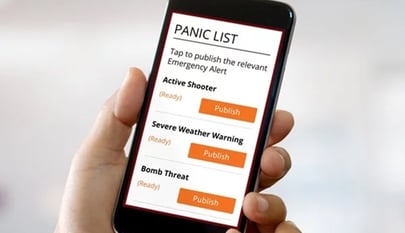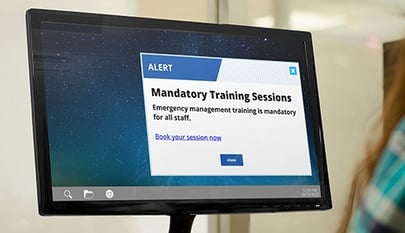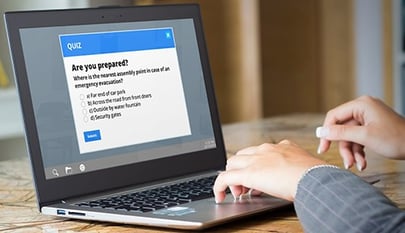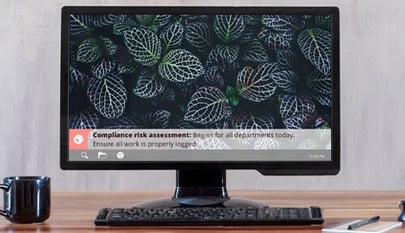Emergency Preparedness Training
Maintain Control When Lives Are On The Line


As the risk of terrorist and active shooter attacks continue to escalate, organizations have a responsibility to keep employees protected and safe.
In most unfolding workplace crises, your employees will be the first responders. Emergency preparedness training will help them know how to react and stay safe when under attack.
Unforeseen emergencies can have a catastrophically high cost for businesses, including total business failure. (Source: EHS Today)
But what is the most effective way to communicate and train staff on personal safety when attention spans are short, email inboxes are already overloaded, and a variety of learning styles need to be catered for? And what's the best way to communicate directly with them if a terror attack is underway?
Preparing an emergency response plan is just one half of the solution – the other half is making sure employees know how to react.






Desktop tickers (also known as scrolling newsfeeds) are ideal for staff reminders, such as to attend an emergency preparedness training session, but being unmissable they’re also perfect for providing critical status updates in times of crisis.

Boost training effectiveness
Get the most value out of your emergency preparedness training program by promoting it through desktop ticker reminders and lock screen displays.
Build knowledge
Reinforce learnings from training through an unmissable lock screen message, or a staff quiz on where the nearest assembly point is, what constitutes suspicious behavior, or under what circumstances they should run or hide.
Improve safety
Make your emergency communication and response plan available online and use desktop tickers to advise staff whenever updates are made. If an emergency strikes, notify staff via panic button and help ensure their safety through a fast survey that captures their location and status.
Increase preparedness
Circulate ongoing reassurance and business continuity communications after an incident through desktop alerts. Improve the organization’s ability to withstand a future emergency by surveying staff on what improvements they feel could be made.
These extra features of the SnapComms platform help improve communication effectiveness without adding unwanted complexity or cost.